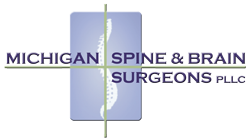Patient Education
Brain Conditions
- Acoustic Neuroma
- Alzheimer's Disease
- Astrocytomas
- Brain Aneurysm
- Brain Tumor (Overview)
- Cavernous Malformation of the Brain (Cavernous Angioma; Cavernoma)
- Cerebral Abscess (Brain Abscess)
- Cerebral Arteriovenous Malformation (AVM)
- Chiari Malformation
- Chronic Subdural Hematoma (Hemorrhage)
- Cluster Headaches
- Concussion
- Epilepsy
- Hydrocephalus
- Meningiomas
- Meningitis
- Metastatic Brain Tumors
- Migraine Headaches
- Myelopathy
- Normal Pressure Hydrocephalus (NPH)
- Occipital Neuralgia (Arnold's Neuralgia)
- Temporal Lobe Seizure
- Parkinson's Disease (PD)
- Pituitary Tumor
- Post-Whiplash Headache
- Pseudotumor Cerebri
- Stroke
- Subdural Hematoma (acute)
- Tension Headaches
- Traumatic Brain Injury (TBI)
- Trigeminal Neuralgia (TN)
- Vertigo
Chiari Malformation
Overview
This rare condition is a malformation of the base of the skull and brain that results in the lower portion of the brain protruding through the foramen magnum - the opening at the base of the skull. The protruding brain can block the normal flow of the fluid that protects the brain and spinal cord, leading to elevated pressure in the brain and a wide range of problems.
How It Forms
Chiari malformation is generally caused by a congenital defect in the anatomy of the skull. Some people, from birth, have a smaller-than-normal space at the back of the skull. This overcrowding forces the back portion of the brain down into the spinal canal. Chiari malformation cases are divided into four types, labeled I - IV.
Chiari I
Chiari I, the least serious type, is marked by a herniation of small lobes called cerebellar tonsils. Many people who have this type of malformation have no symptoms at all, or don't develop any symptoms until later in life. In many cases, Chiari-I goes undiagnosed.
Chiari II
Chiari II, frequently called Arnold-Chiari malformation, is the most common type. It is marked by a greater amount of brain tissue pushing out of the skull. This type is commonly associated with spina bifida and hydrocephalus, and it is usually identified in childhood.
Chiari III & IV
Chiari III and Chiari IV are the most severe types, in which the entire back of the brain protrudes or fails to develop at all. These conditions result in severe neurological defects, and are generally associated with other severe birth defects. Chiari IV is almost always fatal.
Symptoms
Chiari malformation can cause a range of symptoms that can vary widely depending on the type of Chiari malformation. People with this condition may experience severe headaches (particularly at the back of the skull), neck pain, dizziness, and vision or hearing problems. They may experience problems with balance, muscle weakness, numbness or abnormal sensations in the extremities, and vomiting.
Symptoms (Infants)
Infants with Chiari malformation may have difficulty swallowing, irritability during feeding, excessive drooling, and a weak cry. They may also have neck stiffness, arm weakness, breathing problems, developmental delays. They may frequently gag or vomit, and may have an inability to gain weight.
Treatment
People with Chiari I or Chiari II may benefit from a surgical procedure that creates more space in the back of the skull and normalizes the flow of cerebrospinal fluid.
© 2010 Swarm Interactive, Inc.
